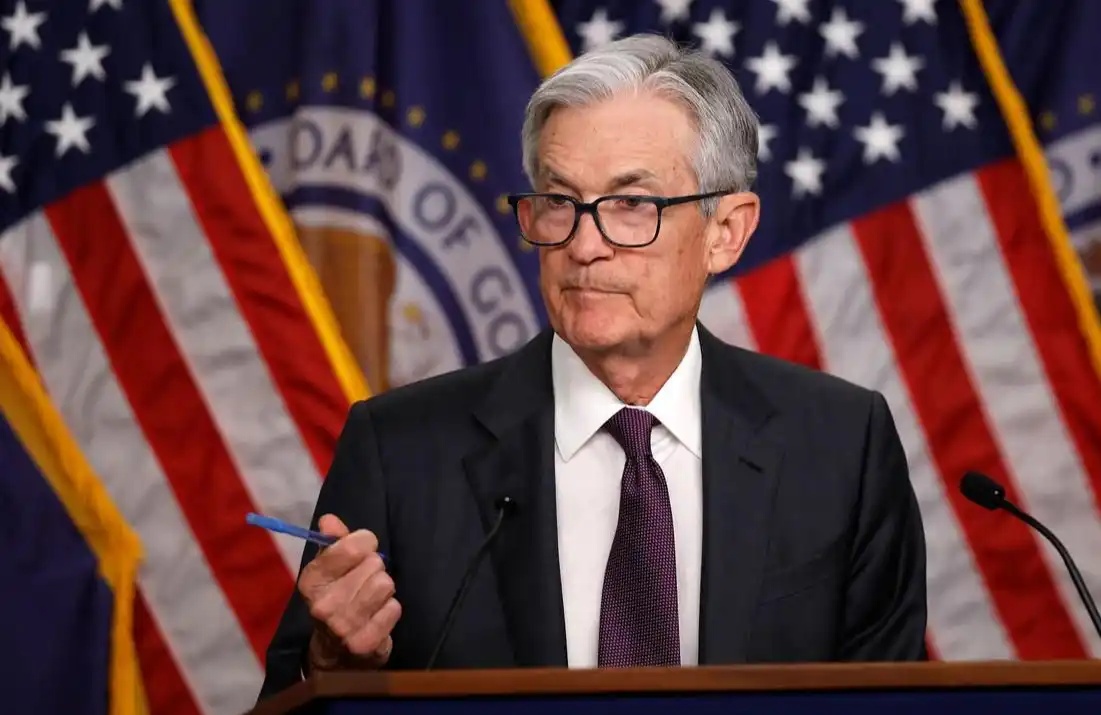Everyone is celebrating the September rate cut, but was Powell's speech really that "dovish"?
Original Article Title: "Amidst the September Rate Cut Celebration, Was Powell's Speech Really That 'Dovish'?"
Original Article Author: Li Xiaoyin, Wall Street View
Last Friday, Federal Reserve Chair Jerome Powell's speech at the Jackson Hole Global Central Bankers' Symposium was widely interpreted as a clear signal of a September rate cut, igniting market enthusiasm and propelling U.S. stocks to new all-time highs.
However, American economist and Stanford University President Jonathan Levin expressed in a Bloomberg opinion piece on Saturday that a deeper analysis of Powell's speech at Jackson Hole reveals that the core message was not unconditional easing but rather a delicate balance in a foggy economic environment between the sluggish labor market and high inflation risks.
Levin stated that the market's euphoric reaction on Friday largely overlooked the key nuances in Powell's speech. He emphasized that if the Fed indeed cuts rates, the reason could be that the economy is in trouble, requiring central bank intervention, rather than due to cooling inflation. This profound background implication was overshadowed by the market's initial response.
The article highlighted that Powell admitted in his speech that policymakers are facing a challenging task of balancing between promoting full employment and maintaining price stability. This policy dilemma suggests that the future rate cut path may be slower and more uncertain than what the market expects.
The Difficult Decision Under Dual Mandate
The article pointed out that when the inflation rate soared to 9.1% in 2022, the Fed's goal was very clear, and policy consensus was relatively easy to achieve. However, the current situation policymakers face is much more complex.
Powell also emphasized in his speech:
"When our goals are in tension as they are now, our framework requires that we take account of the two sides of our dual mandate."
Levin explained that on one hand, despite the low unemployment rate, labor market data has started to waver. On the other hand, the inflation rate remains slightly above the Fed's 2% target.
The article quoted Powell's speech stating, "Our policy rate is now about 100 basis points closer to neutral than it was a year ago," allowing the Fed to "proceed cautiously." However, he also warned that "monetary policy is not on a preset course."
This policy divergence within the Fed has become apparent. The decision in July to keep rates at 4.25% to 4.5% saw dissent from two governors, the first such occurrence since 1992, underscoring significant disagreements on how to interpret the current economic data.
Downside Risk in the Labor Market
The article emphasizes that behind the market's cheer for rate cuts, a key point that has been overlooked is this: the primary motivation for the Fed's rate cuts may stem from concerns about economic deterioration.
In Friday's speech, Powell specifically pointed out that the current labor market is in a "peculiar balance," where both labor supply and demand have slowed significantly simultaneously, partly due to tightening immigration policies.
Powell was blunt about this:
"This unusual situation suggests that the downside risks to employment are increasing. If these risks materialize, they may quickly manifest in the form of a sharp increase in layoffs and rising unemployment rates."
In other words, the rate cut will be a defensive move rather than a declaration of economic strength.
The article points out that there are other data supporting this concern. Powell mentioned that the U.S. GDP growth rate in the first half of this year was only about half of 2024's, partly due to a slowdown in consumer spending. This does not align with the foundation of the continuous bull market in the stock market.
Unresolved Inflation Dilemma
While worrying about the labor market, inflation risks still persist.
The article states that many economists continue to worry that Trump's tariff policies will push up commodity prices in the coming months and even over several quarters. Although the current impact remains mild, industry insiders expect that the pressure of price increases will truly show when the 2026 models are released.
How to deal with the price impact of tariffs is itself a topic of intense debate. Doves believe that policymakers should ignore this "one-time" change in price levels, while hawks are concerned that, after enduring nearly five years of high inflation, this could exacerbate out-of-control inflation expectations.
Levin believes that Powell himself seems to lean towards the camp that "ignores" the impact of tariffs, which may be one of the few dovish signals in his speech. But at the same time, he explicitly warned, "We cannot take for granted that inflation expectations will remain stable," and acknowledged this concern.
Market Reaction May Be Overblown
The article concludes by emphasizing that the market's dovish interpretation of Powell's speech may be somewhat exaggerated, perhaps because investors had previously widely expected a more hawkish stance, leading to position adjustments. The actual situation is far more nuanced, but entirely appropriate given the current economic situation.
Besides the policy challenges, Powell's speech also skillfully avoided political pressure from Trump demanding significant rate cuts. From any angle, Powell's speech showed no sign of succumbing to pressure.
Levin stated that based on the current data, the Fed appears ready to cut rates as early as next month and then proceed to feel out the appropriate rate level to support sustainable growth and low inflation. However, the outlook remains highly uncertain, and the process of policy accommodation may be slower than the market expects.
Welcome to join the official BlockBeats community:
Telegram Subscription Group: https://t.me/theblockbeats
Telegram Discussion Group: https://t.me/BlockBeats_App
Official Twitter Account: https://twitter.com/BlockBeatsAsia
 Forum
Forum

 Finance
Finance
 Specials
Specials
 On-chain Eco
On-chain Eco
 Entry
Entry
 Podcasts
Podcasts
 Activities
Activities
 OPRR
OPRR








